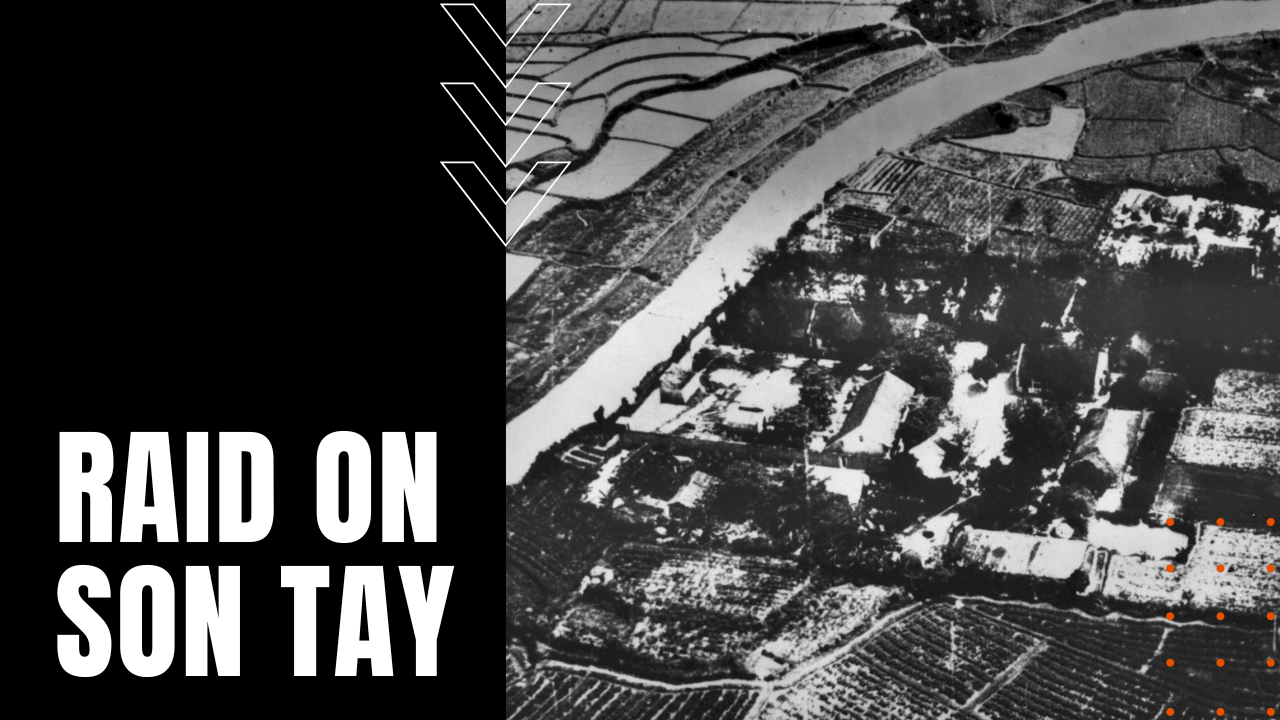Raid on Son Tay

After U.S. military intelligence assessed a high likelihood that 55 American prisoners of war were being held at Son Tay prison camp near the North Vietnamese capital of Hanoi—six in need of immediate medical attention—President Richard M. Nixon asked Pentagon war leaders to explore “some unconventional rescue ideas” to bring our boys home.
Joint-Service Mission
The result was a joint-service mission code-named Operation Ivory Coast, combining more than 100 aircraft, an immense group of support personnel and 56 handpicked Army Special Forces troops who soon gained the nickname, the Son Tay Raiders.
Training at Eglin Air Force Base using a full mockup of the Son Tay prison camp, during the early morning hours of November 20th, 1970, six helicopters, two large support aircraft and five small attack planes took off from Thailand, while Navy carrier-based fighters laid down diversionary fire over Haiphong.
Gutsy Treetop Flying
Flying at treetop altitudes, the airborne attack force reached Son Tay at 2:18 A.M., dropping flares to light up the camp before a lone helicopter destroyed guard towers and troop barracks in rapid succession. A second helicopter performed a pre-planned controlled crash inside the compound, mowing down trees with its blades before Green Berets piled out to rescue prisoners from their cells. A third helicopter landed outside the compound, delivering more Green Berets to the fight, yet after the prison guards were either killed or scattered into the night, the Green Berets radioed the words “negative items,” forcing a stunned bug-out of all assets from the failed mission.
Fighter Jet Hit
One F-105 Wild Weasel fighter jet was struck by a surface-to-air missile, and after the crew ejected over Laos, the returning helicopters quickly rescued them. By the time the 27-minute raid at Son Tay was over, the raiders suffered one broken ankle and a second minor injury, at the same time writing the playbook for all future raids during and following the Vietnam War.
Raid Benefits American POWs
Despite the raid’s failure to return POWs to American soil, the raid at Son Tay triggered North Vietnamese war leaders to consolidate American POWs into fewer locations to defend against future raids, leading to a logarithmic increase in POW communication and organization and an abrupt uptick in POW morale.
POWs Not Forgotten
One POW recalled years later, that “the Son Tay rescue attempt dispelled all doubt: we were not forgotten; our country cared.” The raid also defined a new model for future joint forces operations that continue to exist to this day, making the raid on Son Tay, one of the most fruitful misadventures in American military history.
